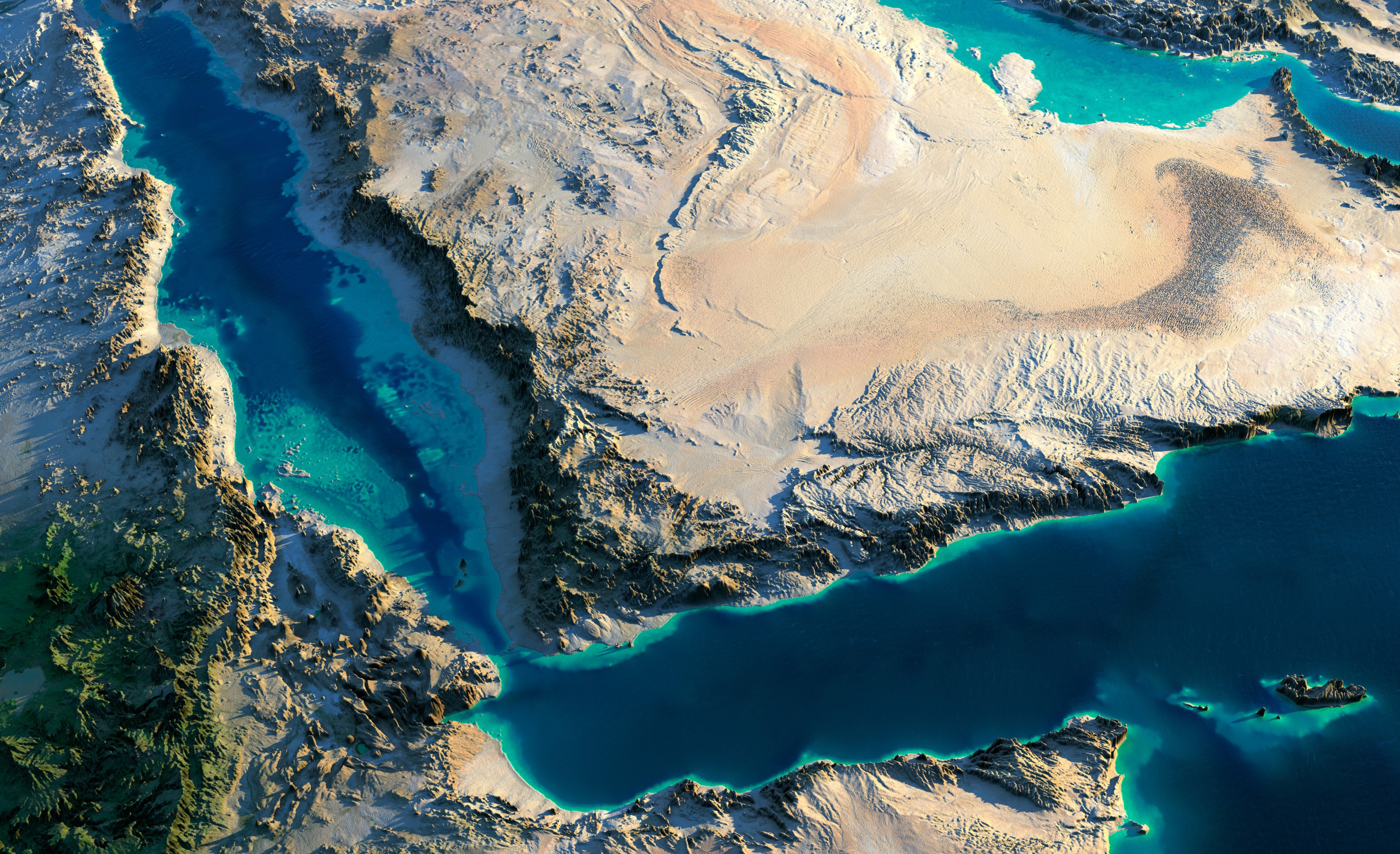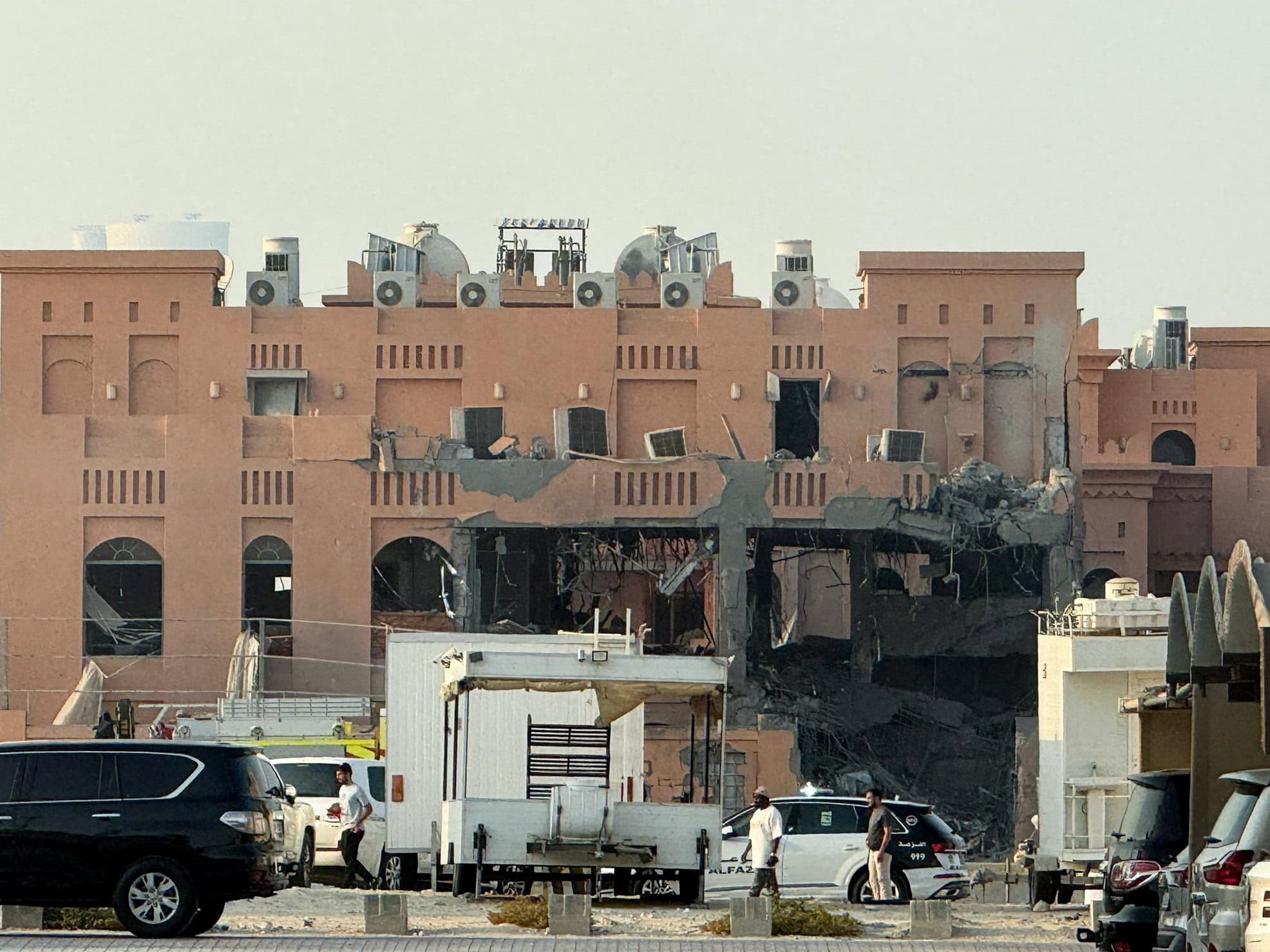
Map: Saudi media
آخر تحديث في: 21-09-2022 الساعة 8 صباحاً بتوقيت عدن
Farida Ahmed (South24)
The transformations of regional and international power balances redirected attention towards the Red Sea region which has big importance and impact from a strategic perspective. This is due to its important geographic location as being a meeting point of three continents and the link between three regional regions including: the Middle East, Horn of Africa and the Gulf. Moreover, 8 countries overlook the Red Sea including 6 Arab states which are KSA, Egypt, Sudan, Jordan, Yemen and Djibouti. The list includes 2 non Arab countries which are Israel and Eritrea. [1] Additionally, the region plays an important role in the international trade between Europe and Asia. The commercial ships that pass through the Red Sea are estimated by more than 20000 annually. It is considered the main road through which Arab Gulf and Iranian oil pass to the global markets in Europe. Europe relies upon the Red Sea to move 60% of its energy needs while the US depends on it to move about 25% of its oil needs. [2]
Deep inside, the most important thing that increases the importance of the Red Sea is that its south overlooks Bab Al-Mandab Strait and the Gulf of Aden which leads to the Arabian Sea. From north, it is linked with the Suez Canal which leads to the Mediterranean Sea. Those are the main lanes for the international navigation movement and the entry for different ships and containers that carry commodities, oil and gas. In addition to the economic importance of the Red Sea, the military and security importance emerge obviously in light of the regional and international developments. This pushes some major countries towards a feverish rivalry over the region to find a foothold or areas of influence, especially in the states that overlook the Red Sea to guarantee their control and influence on the path of the international scene.
The features of the general scene
The rapid developments of the Russian-Ukrainian war have largely impacted the economies of many countries along with the rise of energy and food prices. They also affected the global supply chains in a way that exacerbated the living conditions. This pushed many Western countries, especially the US, to rearrange their balances and interests with some of the regional states including the oil exporting countries such as KSA and Iran. This was clear through latest Joe Biden’s visit to the Middle East, particularly to Riyadh, in July 2022. [3] The visit basically aimed to increase energy production to reduce prices as a result of the war ramifications in Eastern Europe and the harms that hit many countries including the US which suffers from an unprecedented inflation crisis that has not been seen for 40 years. This thing may internally threaten the chances of the Democratics to win the Midterm Elections in November if they lose their Congress majority.
As part of this, KSA and US signed 18 agreements and joint understanding memorandums in the fields of energy, investment, communication, space and health. [4] However, Saudi Crown Prince said that KSA “will increase its energy production to 13 million barrels per day and that his country won’t be able to add more after that. [5] Accordingly, Saudi ministers and officials stressed that the oil policy decisions will be taken in light of the logic of the market and within “Opec+”. On August 13th, the latter announced it will produce additional 100000 barrels per day in September. [6] Nonetheless, “Opec+”’s decision apparently frustrated Joe Biden who expected more production increase. Edward Moya, from Oanda, sarcastically said that it is the “smallest production increase in the history of “Opec+” and this won’t help to overcome the current energy crisis”. He believes that “the Biden administration won’t be happy” for that. Therefore, he predicted a “setback in US-Saudi relations". [7]
The latest confusing international path produced many reactions from the regional states and motivated them to rearrange their economic, security and military priorities. This includes the countries overlooking the Red Sea amid the tensed activities within it. The Riyadh-based “Arab and African Countries of the Red Sea and the Gulf of Aden” council which consists of 8 members announced its intention to hold its first summit in the city of Jeddah to begin setting the practical mechanisms and the strategic obligations towards security and environmental threats which surround one of the most important maritime lanes in the world. [8] Although the summit was postponed, the council’s states are keen to put more effective items to face the threats and the risks they may face in the coming period.
On September 2nd, the Iranian Navy seized two boats affiliated with the US Navy in international waters in the Red Sea before they were ultimately released. However, a US defense official said that “the incident seems as an escalation to the Iranian hostile activities against US”. [9] Days later, the US Air Force announced that two B-52H nuclear bombers flew over the Middle East, in a clear show of force in the region and the fourth of its kind this year. The Air Force explained in a statement [10] that “The bombers’ flight originated at Royal Air Force (RAF) Fairford, England, and flew over the Eastern Mediterranean, Arabian Peninsula and Red Sea before departing the region” noting that “ The mission included fighter escorts from the Royal Air Force and the Air Forces of Kuwait and Saudi Arabia while Senior National Representatives (SNR) of 16 coalition nations, led by the Canadian SNR, Royal Canadian Air Force Lieutenant Colonel Terry Wong, enhanced logistical support”.
The latest activities in the Red Sea reveal the reason that pushes the “Arab and African Countries of the Red Sea and the Gulf of Aden” to reconsider activating the council by holding an expected summit in Jeddah. The preparations for it are underway to safeguard the region’s security and its maritime lanes against any possible threats. This is the main strategic goal behind the establishment of this entity.
Why is there so much attention?
Certainly, the Russian-Ukrainian ramifications can’t be separated from the current scene in the Red Sea. promoting again for the establishment of a Russian base near the coastal city of Port Sudan has its own indications. This includes the preparation for rearranging the international influence in the Red Sea. For years, The US remained on top of such an influence, especially after its counterterrorism strategy in the wake of the September 11th events. The Russian base project is not something new as it began in 2017 when the then Sudanese President Omar Al-Bashir visited the city of Sochi. He delivered a proposal to Putin to take advantage of Sudan’s location for bilateral cooperation as part of Russia’s attempts to develop its relationships with the African countries. He said that “Sudan may serve as Russia’s key to Africa”. [11] this file was suspended with the outbreak of the crisis in Sudan and the fall of Al-Bashir in 2019, However, Mohammed Hamdan Dagalo, the Deputy Chairman of the Sudanese Sovereignty Council, said in March that “There is no problem in establishing Russian military bases on the Red Sea if this is in the interests of Sudan and does not threaten its national security. [12] This means that the possibility of activating this project is still persistent in light of the international changes.
Furthermore, the growing latest terrorism activities in North Sainai and Yemen stirred many concerns whether these organizations can threaten the navigation movement and take advantage of the maritime field by attacking small boats , smuggling people, stealing oil supplies and financing their terrorist operation. This produces serious concerns towards the Houthi activities in the Red Sea, especially regarding smuggling weapons and explosives from Iran [13] via Houthi cells and networks that pass through dozens of Yemeni coastal areas in the Arabian Sea, the Gulf of Aden and the Red Sea before reaching the Houthi hands by land. Additionally, they plant maritime mines in the Red Sea. Engineering teams affiliated with the 5th Military Region in Hajjah Governorate, north west of Yemen, thwarted more than 52 maritime mines in November and December. [14]
The most remarkable development recently were the military parades held by the Houthis in areas under their control. They held 4 parades that began in the governorates of Dhamar, Amran and Sanaa and ended in Al-Hodeida. The latter is one of the main coastal cities overlooking the Red Sea. A research paper published by “South24'' discussed the Houthi military parades and their impact on the scene. [15] It seems that the last military parade in Al-Hodeida aimed to deliver certain messages to the region and the international community rather than addressing the internal voices like the previous parades, especially that Iran supports the Houthis at many levels. For it, the maritime arena is still the typical one in light of the lack of development of Iran’s air forces since the 1980s. Therefore, Tehran relies upon ballistic missiles to substitute its old navy. Thus, the most prominent experience it exports to the Houthis is training them on manufacturing and using the missiles.
This enhances the notion that the last Houthi parade in Al-Hodeida is related to Iran’s nuclear file which Tehran seeks to gain more time and delaying reaching an agreement. This is in return for gaining more negotiating points. This is in light of the major economic crises that await the Western countries in winter due to the Russian-Ukrainian war. With the presence of a military force affiliated with Iran in the Red-Sea, the negotiation opportunities increase amid concerns by the region’s countries and thee international community about the impact of this on the maritime navigation movement and the energy supplies that pass through the Red Sea to other countries including Europe and US. The UN Security Council condemned the latest Houthi military Parade in Al-Hodeida. It “called for an end to all forms of visible military manifestations in violation of the Hodeida agreement” [16]. It has been apparently an indication about the possible threats if the Houthis violate the truce and resort to the military options.
Accordingly, it seems that transforming the conflict to the Red Sea is possible in light of the recent feverish activities and showing off military regional and international capabilities through some ongoing military operations and maneuvers. For Yemen, the Houthis constitute an actual threat against the Red Sea security. Thus, it is important for the regional forces in Yemen, represented in the Saudi-led Arab Coalition, to balance their positions and relationships with the anti-Houthi local partners, especially the Southerners who control important coastal locations on the Gulf of Aden and near Bab Al-Mandab Strait. This is important in maintaining and securing the international navigation lanes in light of the current international developments and against any possible threats or risks by the Houthis and extremist groups.
:
[1] Al Moqatel - Red Sea Security (muqatel.com)
[2] Foreign presence in the Red Sea: Increasing threats and armed conflict is coming (araa.sa)
[4] KSA and the United States sign 18 agreements and memorandum of cooperation (alarabiya.net)
[5] After Biden's Visit to KSA , What Happened to Oil Prices? - RT Arabic
[6] OPEC + agrees to a 100,000-barrel increase in oil production, starting from September - CNN Arabic
[8] The “Jeddah Summit”... Regional Coordination to Face Challenges | (aawsat.com)
[9] Iranian Navy seized 2 US Navy maritime drones on Thursday | CNN Politics
[11] Al-Bashir asks Russia for protection to confront “hostile America” | (aawsat.com)
[13] Smuggling Iranian weapons to the Houthis.. cross seas lanes (al-ain.com)
[14] Video.. Thwarting naval mines planted by the Houthis in the Red Sea (alarabiya.net)
[15] The Houthi Military Parades: Covering Weakness or Threatening Messages(South24)

قبل 3 أشهر

قبل 3 أشهر